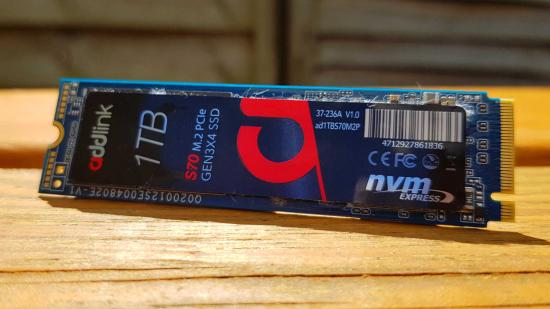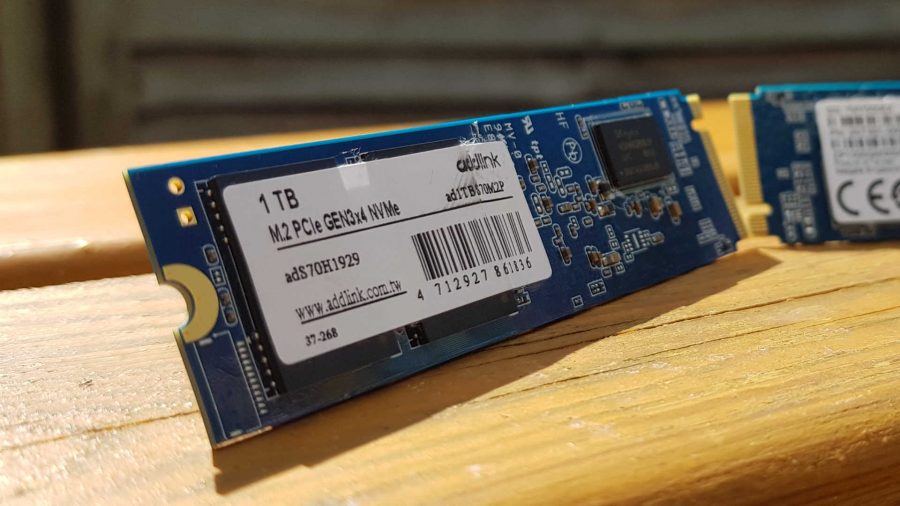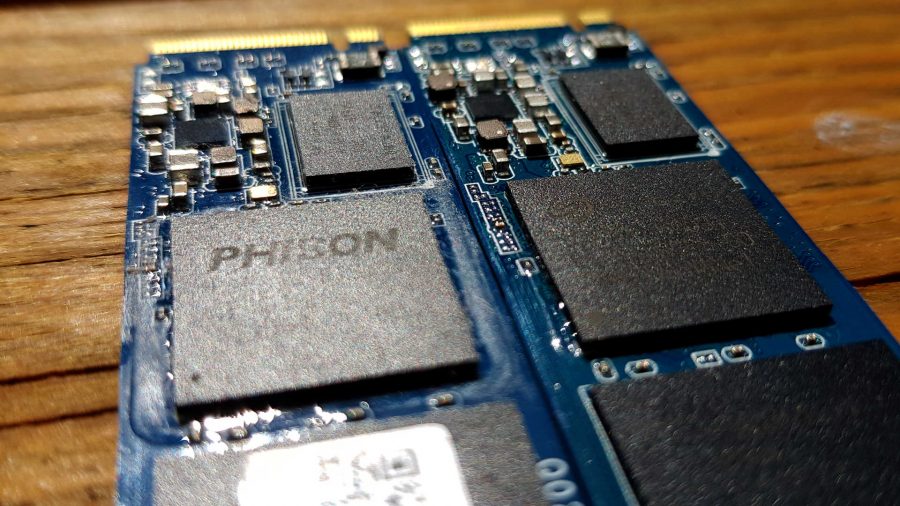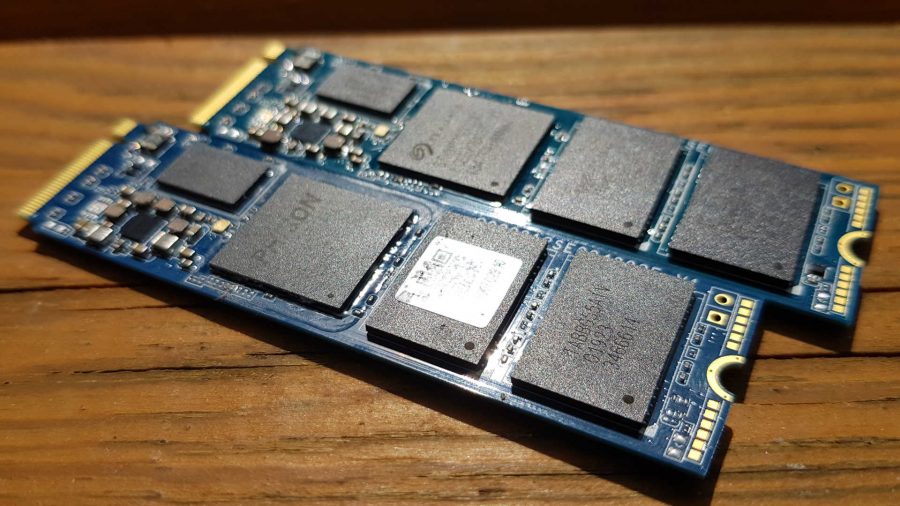Our Verdict
There has to be one, but for the life of me I can’t find the catch. The 1TB Addlink S70 undercuts everyone and yet is still one of the speediests SSDs you can jam into your system.
At around 12 pennies per GB what more do you need to read about this 1TB Addlink S70 SSD? Look, it’s not from some Maxtor subsidiary, it’s fine. You still need more? Okay. This is an SSD that is, in essence, identical to some of the latest NVMe drives to come out of the Seagate, Corsair, and Silicon Power stables, and they’re all pretty trustworthy names in storage, right? Oh, and it’s got a much higher endurance rating than even the Samsung 970 EVO Plus.
Quite how the Taiwanese company is able to create a 1TB drive that’s practically half the price of a lot of its near-identical competitors is beyond me. But given the amount of money that could be made if you’re able to manufacture such a capable drive, at a price that gives you even a modest margin and still undercuts everyone else, then you’re set to make a pretty fair chunk of cash.
So long as you can continue to make them, that is. And it looks like Addlink is capable of doing that because its drives are still in stock on both sides of the Atlantic pond, so you’re still able to get your hands on one of the most unfeasibly affordable, and supremely speedy SSDs you can jam into your gaming PC. So, what are you waiting for?
Honestly, this Addlink S70 SSD review could have been one of the shortest storage articles I’ve ever written. Beyond the price and the promises of high NVMe storage performance you really don’t need to know a whole lot else. But, in the interests of journalistic integrity I am going to give you more; specifically about the specifications.
The most important things for any SSD are the NAND Flash memory being used and the memory controller soldered onto the board to look after however many slices of solid state storage silicon are connected to it. And the important thing to note is that, while Addlink /has/ simply used off-the-shelf parts to put together the S70 SSD, they’re top notch components.
Only Samsung, and to a lesser extent WD and Crucial/Micron, is able to really lay claim to the ability to create its solid state drives in-house. It’s the only one truly making both its own memory and its own controllers, and it took Samsung a good few generations of middling SSDs to be able to really hit its stride. Micron makes its own memory so can use its manufacturing might to drive down the costs of its drives, and WD is starting to use its own controller and the tight relationship with Toshiba and SanDisk means it has access to some fine-ass memory which is practically in-house too.
| Addlink S70 | Seagate Firecuda 510 | Samsung 970 EVO | WD Black SN750 | |
| Capacity | 1TB | 1TB | 1TB | 1TB |
| Controller | Phison PS5012-E12 | Phison PS5012-E12 | Samsung Phoenix | WD in-house |
| NAND | Toshiba 3D TLC | Toshiba 3D TLC | Samsung 3-bit MLC | Toshiba 3D TLC |
| Rated read | 3,400MB/s | 3,450MB/s | 3,500MB/s | 3,470MB/s |
| Rated write | 3,000MB/s | 3,200MB/s | 3,300MB/s | 3,000MB/s |
| TBW | 1,200TBW | 1,300TBW | 600TBW | 600TBW |
| Price | $120 | £125 | $230 | £237 | $230 | £199 | $202 | £196 |
That’s what has made the WD Black SN750 such a competitive drive up against the Samsung SSD hegemony. But look under the unassuming Addlink sticker on this drive and you’ll see some very familiar memory under there too. Addlink is using the same 64-layer Toshiba 3D TLC memory in its S70 SSD as the SN750 and the same Phison memory controller as the Seagate Firecuda 510 SSD.
In fact, I’d be very surprised if the Seagate Firecuda and this Addlink S70 came from different factories. The PCB number is literally identical, they’re both using the same memory and controller, and the only differences are that Seagate has stuck its logo on the Phison silicon and the S70 has a slightly different batch number to its Toshiba TLC NAND chips.
And yet the 1TB version of the Seagate drive is $230 and this 1TB Addlink S70 SSD is just $120.
Seagate may point to the fact it’s running its own firmware on the drive while Addlink is using the standard Phison firmware, but the performance differences between them don’t suggest that the Seagate code is in any way superior. In fact the Addlink drive is just a tiny bit quicker across most of our benchmarking suite.
Which means it’s just as good as the WD Black SN750 – and in some cases better – and is also seriously competitive with the more expensive Samsung 970 EVO Plus drive. Considering the Addlink S70 also has an impressive 1,200TBW endurance rating I’m 100% sold on recommending this drive.
I don’t pretend to understand exactly how the little-known Taiwanese manufacturer is able to create an almost identical drive for half the price and still stay solvent, but there seem to be plenty of drives in stock to buy, suggesting this isn’t just a small batch order. Addlink has told me it has its own factories where some of the assembly process takes place, if that’s the same place Seagate has the drives put together then maybe that goes some way to explaining the price disparity.
But however it’s worked out, as the end user, we’re the winner. Normally less well-known companies producing drives purely using off-the-shelf components can’t compete on price, but Addlink has bucked that trend and made it almost impossible to recommend any other consumer-level NVMe SSD. Seriously, the Addlink S70 is a great, great-value SSD that will make a massive difference to the storage performance of your gaming PC.



